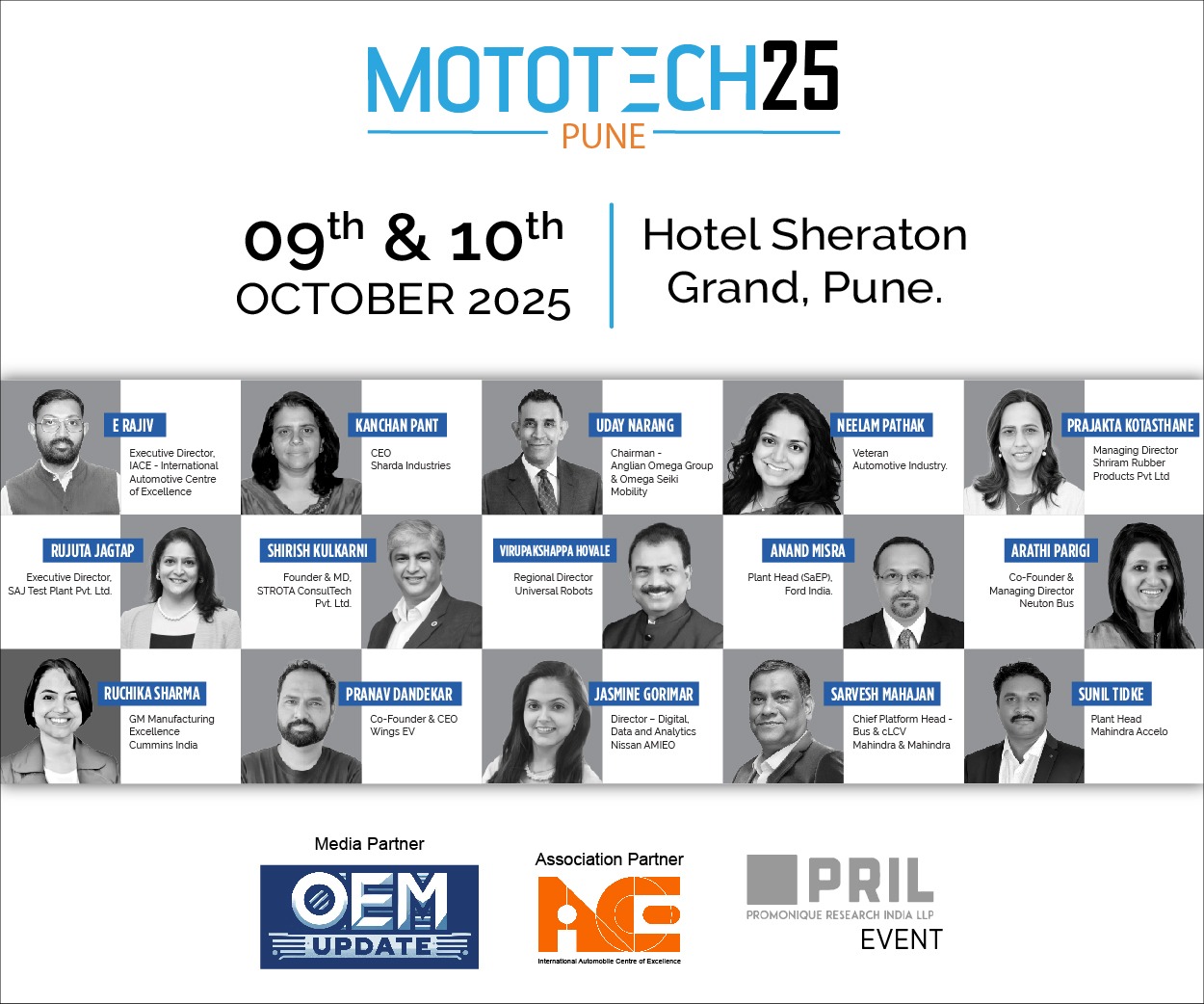Lubricants: Lot more than oil
By OEM Update Editorial December 10, 2018 2:28 pm IST
Engine technology is developing rapidly. Every few days there is an introduction of new specifications, and in this fast developing arena it becomes imperative to have right lubricant for the engines
Lubricants are used to ensure smooth working of a machine and its moving components. However, it has now evolved to a stage where lubricants play a vital role in terms of energy efficiency, reducing cycle time, and fuel economy.
Indian market for lubricants
“The market for lubricants in India is very huge,” says Partha Mukherjee, Sr. General Manager Marketing (Lube), Grauer & Weil (I) Ltd, “The lube market can be segregated into many sections, but the market for automotive lubricant is enormous. Apart from that, oil is used several applications in areas such as railways, defence, mining, etc. as a commodity.”
The difference
Lubricants play a vital role in keeping the most diversified type of machines in variety of applications. Different industries, machine manufacturers/OEMs and end users today are constantly striving to improve efficiency and operational reliability, and enhance competitiveness by avoiding loss of output and increased maintenance costs.
Siva Kasturi, Global OEM Manager – India & South East Asia, Shell Lubricants, says, “Besides reducing friction and offering strong reliability to equipment, lubricants also play a vital role in terms of energy efficiency, reducing cycle time, and fuel economy as well. There are certainly different performance specifications driven by major specifying bodies such as ISO, ASTM, AGMA (American Gear Manufacturers Association), DIN, BIS (Bureau of Indian Standards), NLGI, JASO (Japanese Automotive Standards Organization) and GB standards of China etc.”
He further elaborates that most of the oil specifications are documents, which conform to the comprehensive technical standards and standard performance requirements for different applications.
“To simply explain, the specifications can be categorised as specifications related to the product’s physical and chemical properties such as viscosity, flash point, pour point, VI, etc. Other lube oils specifications can be related to product performance (like FZG value, demulsibility, copper corrosion, RPVOT, TOST, bearing protection tests like FAG FE-8, TIMKEN OK Load etc). It is imperative that the end users need to certainly follow these oil specifications,which are designed by international specifying bodies to ensure safety and reliability in case they do not have access to OEM or lack of details of application etc.” Siva adds.
OEM approved lubricants
“OEM Approved” lube oils can be defined as oils, which meet OEM’s performance specification.
Here, Siva describes the necessity of OEM approved lubricants. “Certainly, it is important that OEMs need to ensure that the respective lube oils meet the most relevant industry specification for the respective application. Besides this, most of the OEMs consider all the oil specifications governed by the global specifying bodies. However, it is important that OEMs approve different lube oils based on their own experience, design parameters, special seals/paints used by OEMs, bearings and components used in assembly of machines,” he says.
“Most of the OEMs typically have their own process of approving various lube oils. This would be either through an extensive field trial or a comprehensive bench test data. Few of the reputed OEMs also insist end users to follow OEM approved oils to ensure that the reliability, warranty and performance are assured from a lubrication stand point,” Siva adds.
However, Partha has a different approach. “Growel’s lubricant division is just six years old. So instead of going to big OEMs and waiting for their approvals, we reach out to the tier 1 and tier 2 vendors for business. Once you build a rapport with them, the OEMs will gradually get to know about our products. Now we’ve reached the second stage where we’ve started working with big companies such as Maruti, Mahindra & Mahindra, Tata Motors, etc. and we are trying to get approvals,” he concludes.OEMs work with lubricant companies for the development of specifications for the engines oils. These specifications help to standardise the lubricants in the vehicles across the globe. Hari Prakash M, CEO, GP Petroleums Ltd. says, “To meet the environmental norms and regulations in the engine technology while the complexity is increasing, lubricants manufacturers are geared up to meet the demands of the OEMs such as durability, fuel economy and long drain intervals.”
Meeting the specification are those lubricants, which are developed considering the specific engine category requirement and market general lubricants. Lubricants in this category are formulated with base stocks and additives suitable for the engine requirements. This category of lubricants is an exact mix of that specified by the OEM.
Prakash adds, “Lubricants manufacturers submit oil samples based on the requirement of the OEMs. These lubricants undergo a series of rigorous testing in the approved laboratories globally and internal OEM tests specific tests to ensure the quality control process. These are the oils, which are fully compliant as per the OEM and the approval process is for the specific time period.”
Automotive OEMs in partnership with oil companies
In traditional style, OEMs working model involve lubricant companies after the development of the engines and based on the specified requirements. In recent years, due to changes in environment norms and regulations, there is a lot of stress on engine technology to meet these requirements for OEMs. To meet these expectations, it is important to develop the right lubricants.
Prakash says, “OEMs have realised the importance of co-engineering with lubricants for the better value proposition of their customers. This is beneficial for both OEMs and lubricant companies, where OEMs can use the experience of lubricant companies for better delivery of the product, especially for low viscosity oils for fuel economy and low SAPs oil for emission reduction to establish the durability.”
The overall process is now becoming automatically value driven and it is beneficial for the for OEMs and lubricants companies to work in partnerships to get better value proposition. Both companies have been able to make the most of their strengths and achieve a winning formula based on the combination of bike, its rider, fuel and lubricant, concludes Prakash.
Few of the reputed OEMs insist end users to follow OEM approved oils to ensure that the reliability, warranty and performance are assured
Siva Kasturi, Global OEM Manager – India & South East Asia, Shell Lubricants
The lube market can be segregated into many sections, but the market for automotive lubricant is enormous
Partha Mukherjee, Sr. General Manager Marketing (Lube), Grauer& Weil (I) Ltd
OEMs specifications help to standardise the lubricants in the vehicles across the globe
Hari Prakash M, CEO, GP Petroleums Ltd
Cookie Consent
We use cookies to personalize your experience. By continuing to visit this website you agree to our Terms & Conditions, Privacy Policy and Cookie Policy.
















